Please note that the disused quarry is on private land and not safe to explore. Everything can be seen from the track,
In the next section I will reveal the geographical clues that allow you to trace the route of the aqueduct from west to east through the present countryside and also some elements of its history. There are still a few sections where I don't know its exact course underground as it is now well hidden. A major factor in its construction was the way it was contoured south of the the hill occupied by Heddon village, its whole course apparently designed to allow water to be transferred solely by gravity
View Whittle Dene to Throckley Aqueduct in a larger map
For the convenience of the poorer classes, the corporation had provided a number of public fountains or stand-pipes of which there were about 18 or 20 in different parts of the town: Gallowgate, Percy street, Darn-Crook, High Friar Street, Newgate Street, Big Market, High Bridge, head of The Side, Westgate Street, foot of Pilgrim Street, Manor Street, Sandgate West and East, St. Ann's Row, East Ballast Hills, St. Lawrence, New Green Market, Leazes near the Crescent, and one was being prepared in the Close.
The cost of water laid on by the Joint Stock Water Company was 18s. to 30s. for private houses. Manufacturies paid 3d. to 4d. for every 224 gallons. The poor paid one farthing for a tub or large pail full, four or five times more than the richer inhabitants of the town who could afford to have the water conveyed to their houses. The cost of water for the poorer classes was due to the water company having to pay for an attendant at each stand-pipe.
Better proposals led to the Whittle Dene Water Company being established in 1845. Reservoirs were planned at Whittle Dene above the village of Ovingham. These reservoirs, completed in 1848, at last gave Newcastle and Gateshead a steady, clean and regular supply of water. At this point the major works of the new company were completed and later described as ‘the greatest step with reference to the hydraulic supply of a Town that has been taken in the Kingdom’.
Following these early beginnings, the Newcastle and Gateshead Water Company came into being, gradually extending its area of supply and increasing its supply points. We now take clean and safe drinking water for granted, but as current construction by Northumbrian Water at the Horsley Water Treatment Works and the modernisation of pipelines across the area show, improvement is always a continuous necessity to provide for future supply.
The first piece of evidence is in the classic: Water to Tyneside - A History of the Newcastle and Gateshead Water Company by Robert William Rennison (1979).
Map 9 on page 112, showing works undertaken between 1866 and 1877, is reproduced below.
The tunnel which carries the aqueduct below Lousy Hill is shown on the map by a line of six air shafts (yellow on the map) and an internal short open section of aqueduct. The section at Bessy's Bog was to collapse in 1877 and had to be rebuilt. The end of the tunnel appears on aerial photographs to be marked by an open square shaft ( a well) surrounded by a high wall within a small area of woodland in the vicinity of the junction of March Burn and Howdene Burn.
I can find few clues to the underground course of the pipeline from here, but it must pass somewhere below the modern A69 dual carriageway and also the road south that leads to the crossroads north of Wylam. Just east of here, on the north side of the Hexham Road is a small waterworks building, shown on the maps as Well House. This is located close to a minor watercourse (a tributary of Rudchester Burn). My initial guess was that the pipeline would cross the Hexham Road at this point but further inspection at the stream east of Well House suggests that it probably continues underground along the north side of the Hexham Road, in front of the properties at Blakeley Hill, Houghton Moor and Bluebell Cottages.
How the pipeline crosses Rudchester Burn and its valley I am unsure, but two clues to its course may be an Air Shaft shown in Blakeley Plantation the north side of the Hexham Road on the 1920 OS Map, and the unusually wide grass verge beside the road that runs east of Bluebell Cottages.
The disused quarry was used to store waste sludge, periodically removed from the filter beds. It was part of the original plan to build a reservoir at Throckley and also a ongoing aqueduct. However, originally only a well was actually built. Later, adjacent land was obtained and the filter beds constructed.
Just to dispell the myth that nobody reads my blogs, I can report that a recent correspondent who resides in one of the houses on Heddon Banks sent me the following photos of part of the cast-iron pipe which he had uncovered in his garden, along with an interesting plan of its course from his house deeds. Its line is much further north of the track than I had suspected and is quite close to the houses.
The massive brick retaining walls alongside Hexham Road at Throckley were subject to leakage and also collapse. In 1899 water leaked into the neighboring Methodist Chapel who were awarded £25 compensation. This chapel (now demolished) had been one of three built in the area by William Haswell Stephenson who was a Director of the Water Company between 1895 and 1918.
A report by Forster in 1888 looked at increasing the carrying capacity of the aqueduct and mains. He recommended construction of a further reservoir at Whittle Dean and replacement of the 42" earthenware pipes between Whittle Dean and Throckley by cast iron pipes. Although there were now 9 filters at Throckley, they were only capable of filtering some 8 mgd and the report recommended acquiring more land. This was refused by the landowner (Greenwich Hospital) and new filters were eventually built at Whittle Dean with water supplied to Newcastle by new mains.

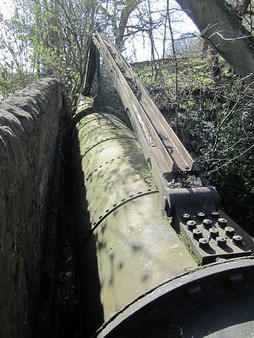
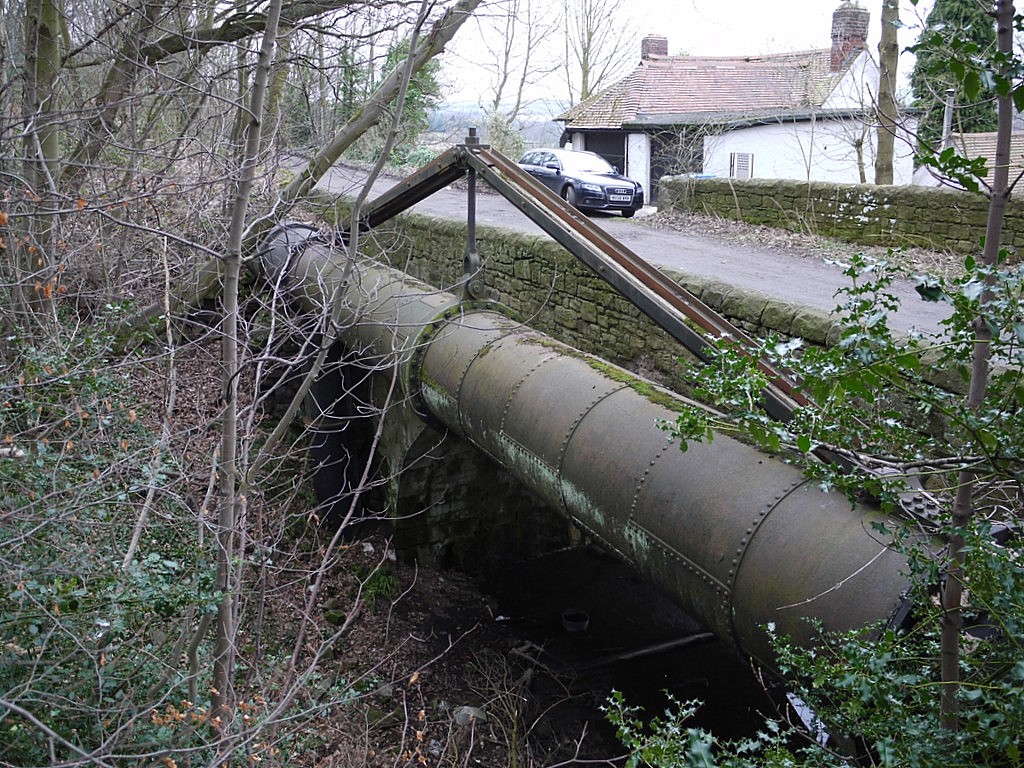
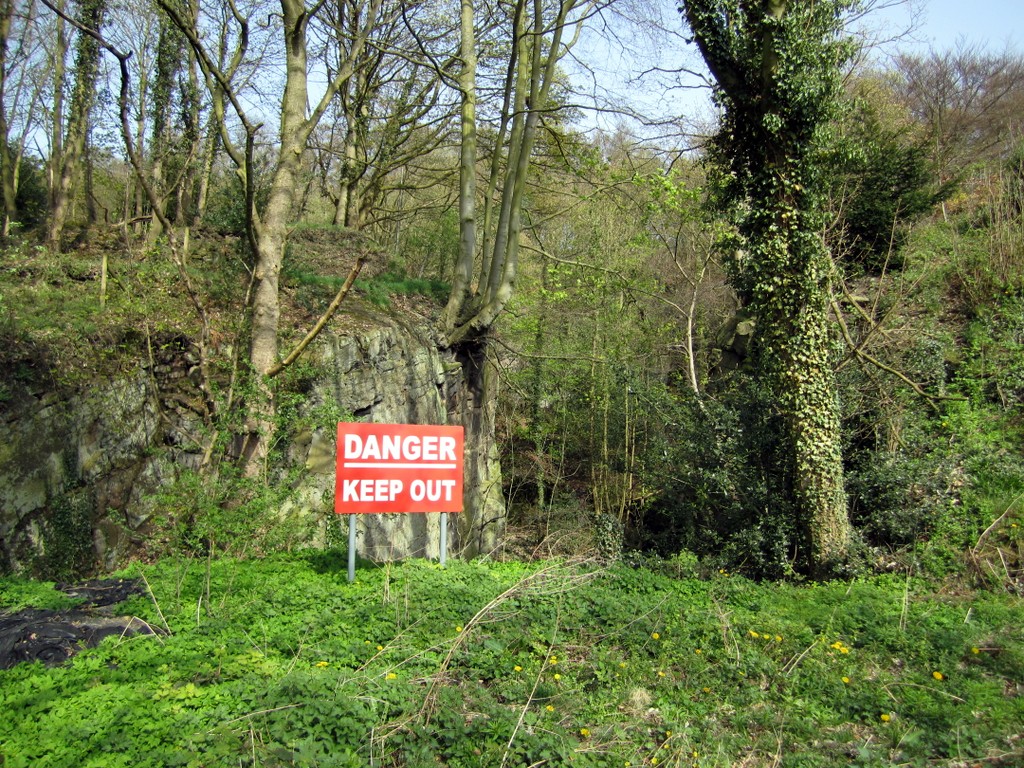
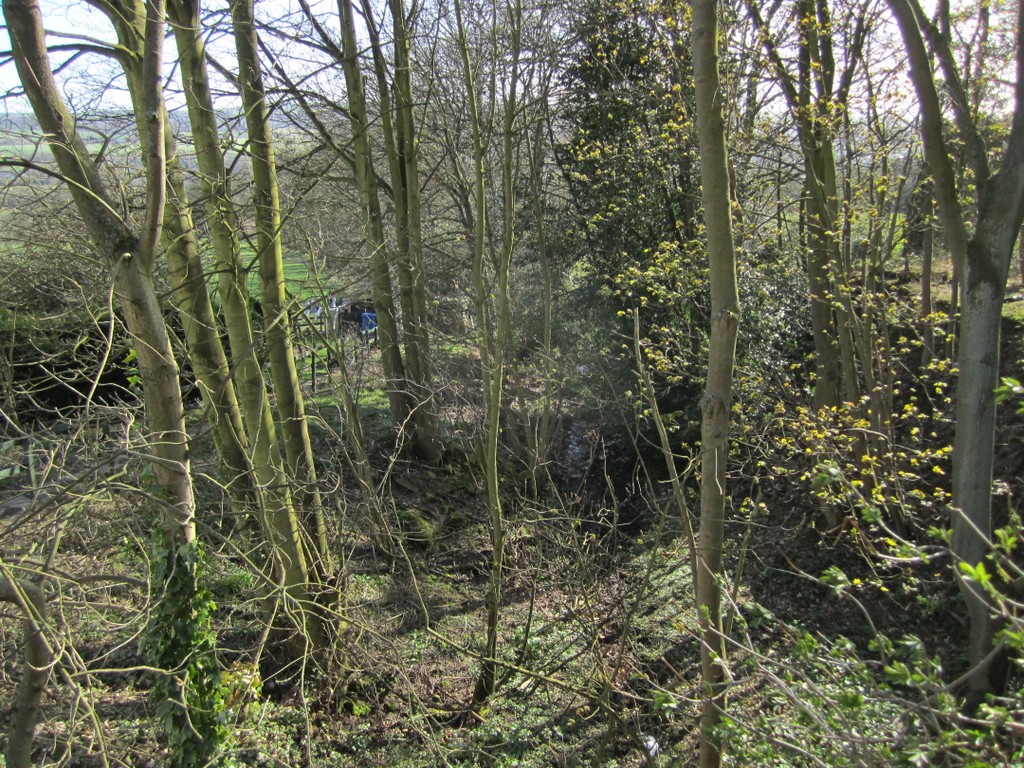
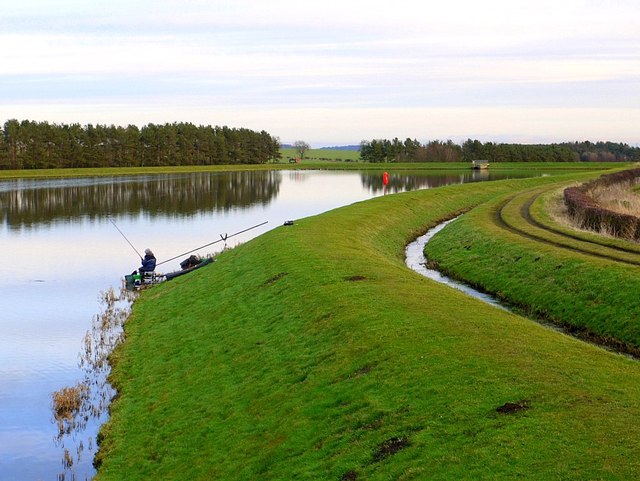
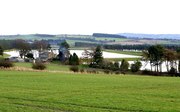


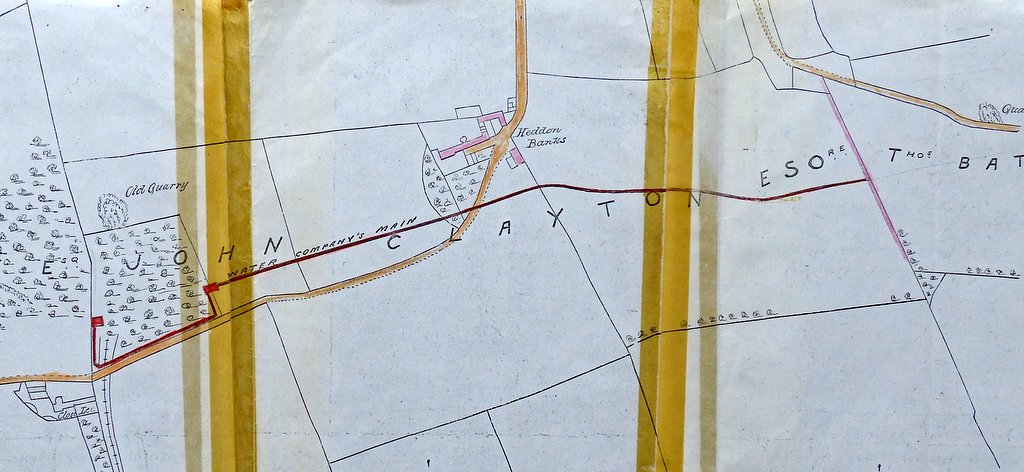
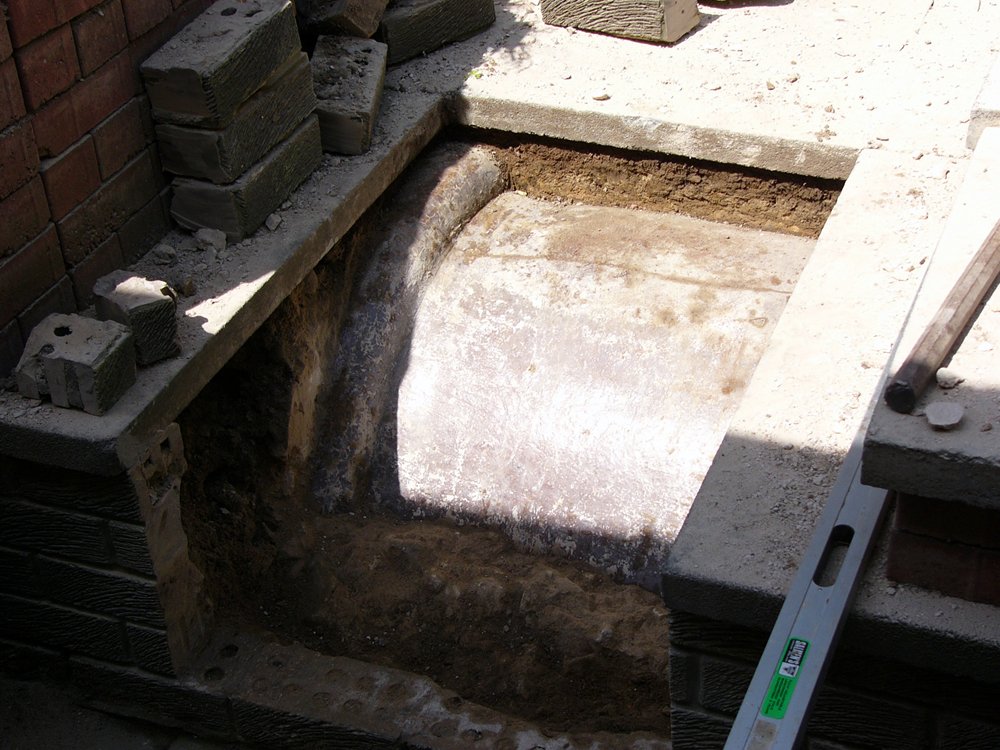
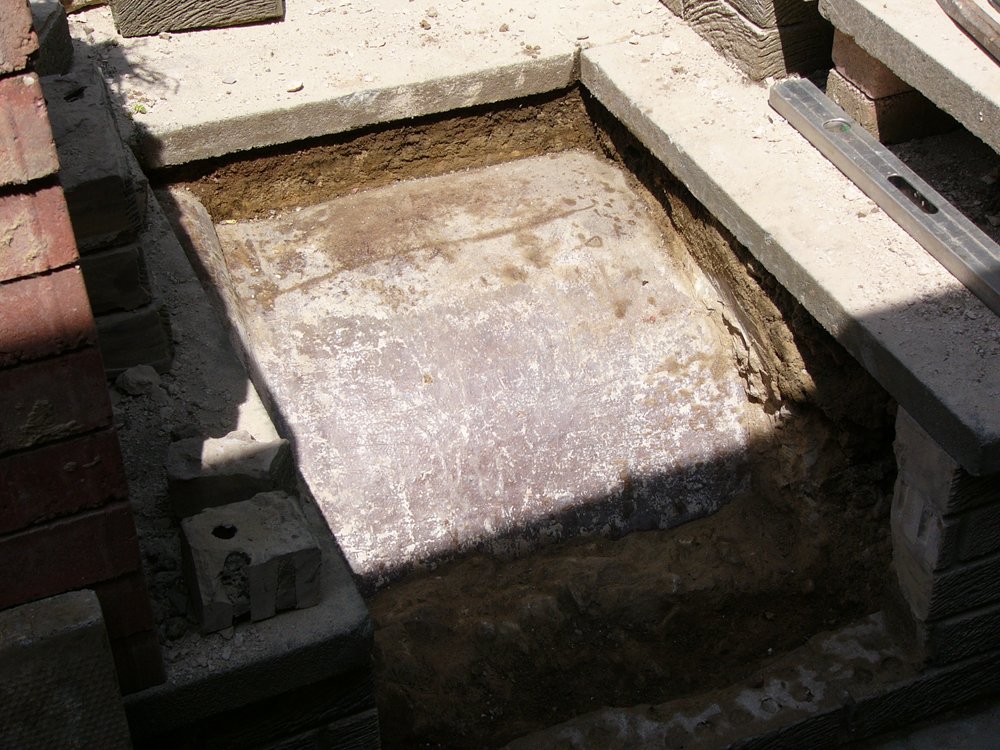
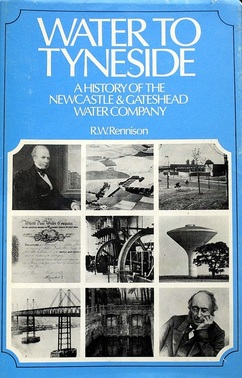
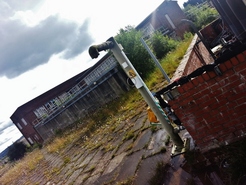
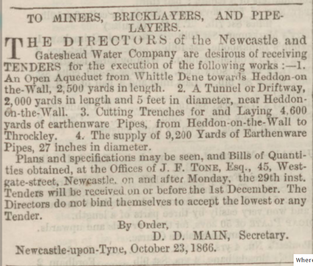
 RSS Feed
RSS Feed
